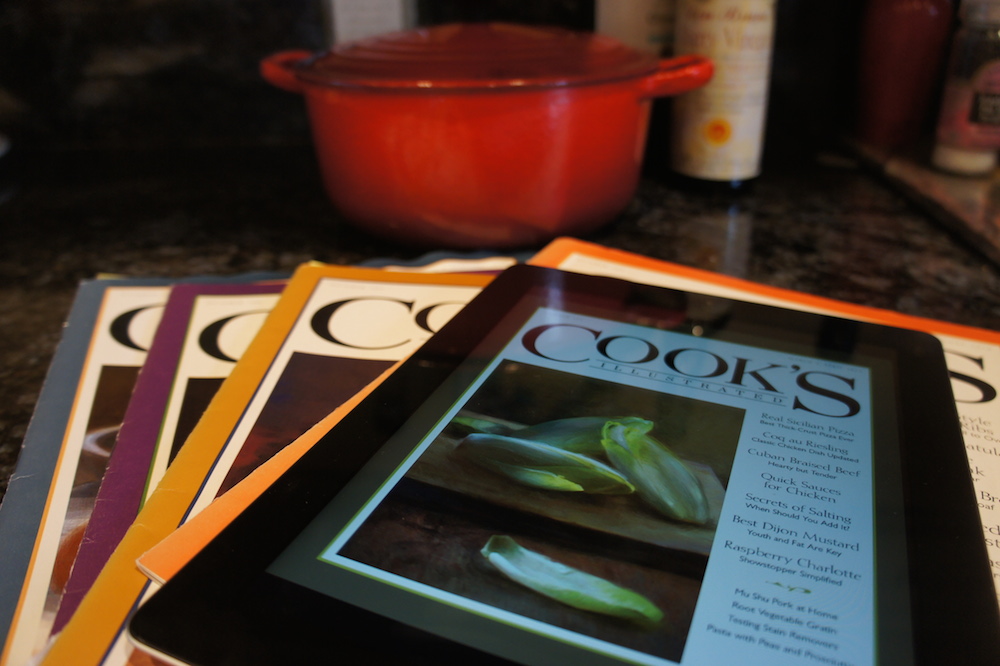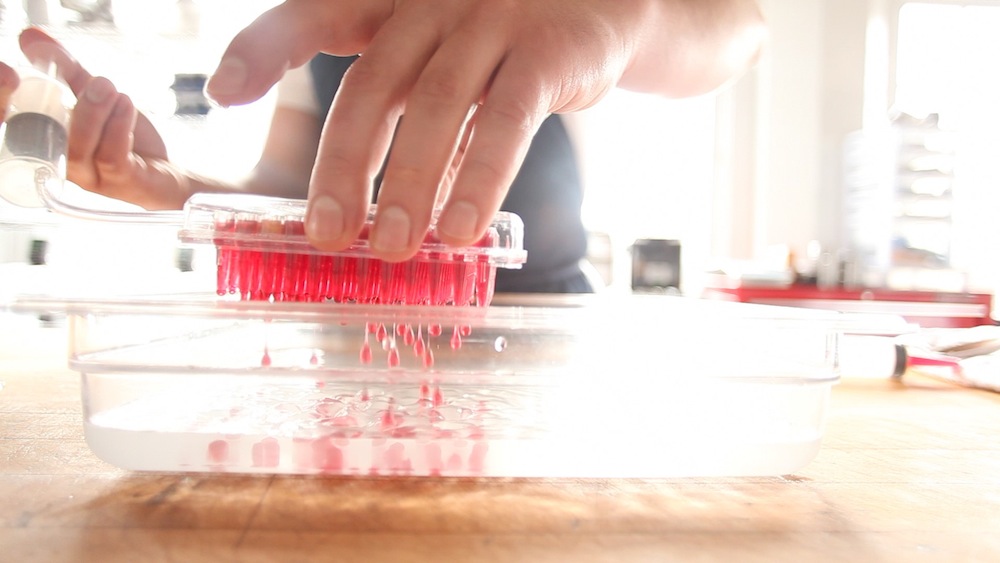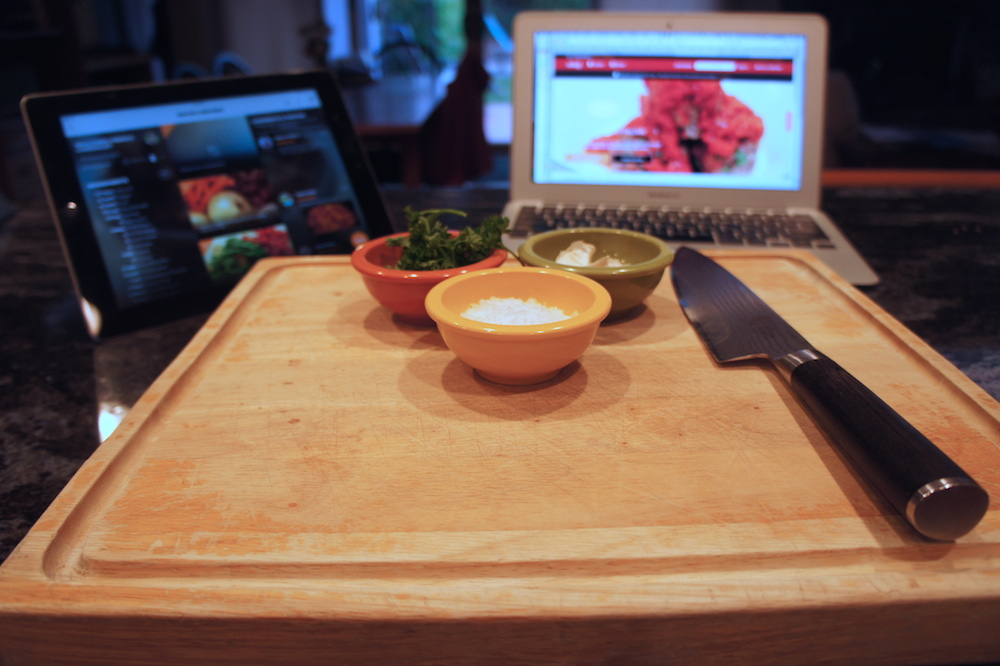
In the Bay Area there are countless apps that have food delivered to your doorstep in minutes as well as meal delivery apps that make it easy to never lift a frying-pan again. But what if you want to become a better cook-- without shelling out thousands of dollars for culinary school? There are, obviously, apps for that too. Here’s a sample of four cooking apps and online services that do more than just provide recipes.
SideChef
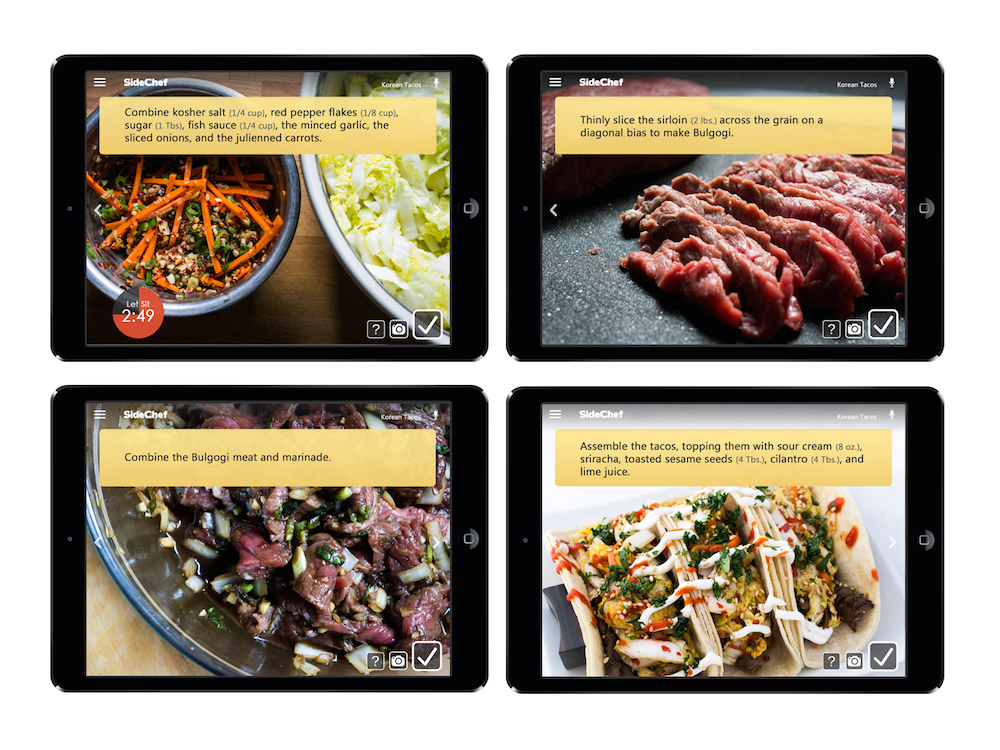
SideChef guides wanna-be-chefs through a recipe step-by-step. This app got its start through a successful Kickstarter campaign back in 2013. It features over 1,000 different recipes submitted by food bloggers, other users, and a few partner chefs. You can search for your next meal by region (American to Thai, German to Japanese), type of dish (appetizer, seafood, dessert, brunch, etc) the time it takes to cook, and many other different tags. One of SideChef’s best features is its voice command option. When selected, the app will dictate each step to you; when you want to move on, you simply say, “next.” No more smearing butter and sauce all over your iPad. There’s also a handy self-timer on the app, and a way to send ingredient lists by text or email. If you’re already a talented home cook, you can create your own recipes to share on SideChef. I appreciated the interactive glossary of terms reminding me with a simple video the difference between chop, dice and slice.
There is room for improvement, however. The search bar doesn’t always yield the most accurate results. I was craving a blackberry pie, but when I searched for it, the top four results were a quiche Lorraine, sun-dried tomato and feta quiche, apple pie fries, and a pierogi with feta tomato and white wine sauce. There are blackberry desserts, and other berry pies, which should’ve showed up. Also, some of the recipes don’t have any photos. It would’ve been nice to see step-by-step photos of the chopped kale salad I was making.
SideChef made the iOS list of top ten apps within a week of its release, and it’s currently free for the iPad, iPhone and Android.
Salted
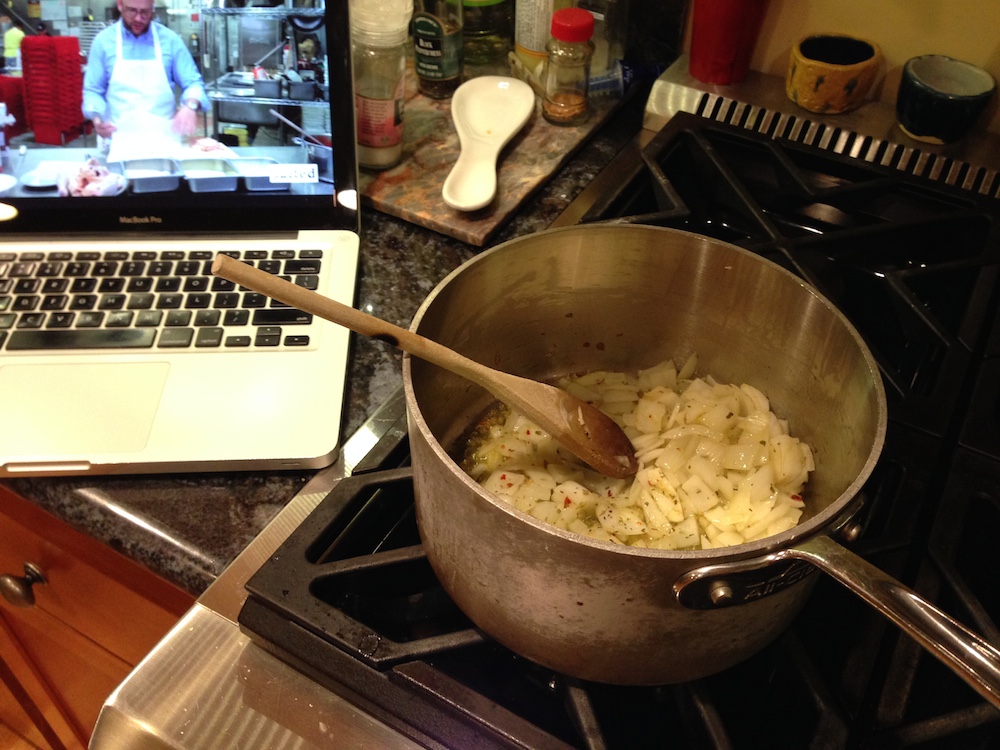
If SideChef is trying to be your kitchen sidekick for a date-night dinner, the new online service Salted is more like a digital cooking school. Salted works with about 50 75 (updated 3/23) chefs to provide video tutorials and courses to help you master certain cuisines and kitchen skills. There’s everything from a “How To Cook Bootcamp” to a skill class on “How to Break Down an Entire Goat.” I landed somewhere in the middle, and took a course on traditional Italian cooking, taught by four different chefs who work in Italian restaurants around the country. There are also knife skills courses, courses on how to use a rolling pin, how to make butter and pasta from scratch, how to temper oil, and many others.
